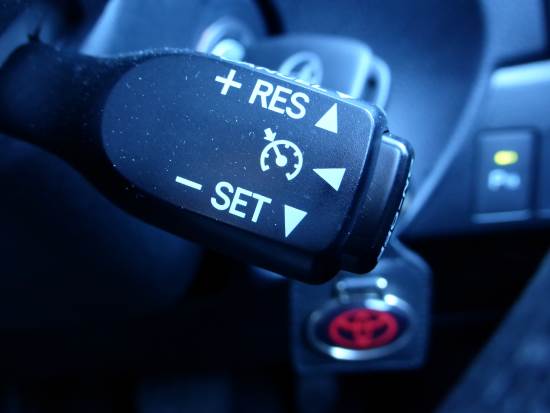
Every year an email does the rounds about a woman who had cruise control on when driving while it was raining, she began to hydroplane (aquaplane) and her car ‘literally flew’ through the air.
Basically she crashed, and you can read it here. However, the description is wrong.
Cruise control is a system that tries to keep your car at a constant speed. It’s useful on long motorway journeys where you don’t want your speed to creep up. It doesn’t accelerate hard and most systems have no control over the brakes.
The bare minimum of options with cruise control is on/off, set and cancel. Most have a resume function which restores your last speed, and most new ones have the ability to increase or decrease the speed in 1mph increments (and sometimes bigger jumps). Some systems also have a speed limiter option and more advanced systems use radar to detect the distance to the vehicle in front and adjust your speed to its speed while keeping a safe distance. Some vehicles will use the brakes or gears to slow you down if you drive downhill.
You can turn cruise control off by applying the brakes, changing gear, pressing cancel or turning it off using the on/off switch.
So, why shouldn’t you use cruise control in the rain?
If you have traction control or electronic stability control fitted to your car (and you don’t turn it off) there is no reason you should not use cruise control in the rain. However, if you don’t, using cruise control when it’s raining or (worse) icy, is a bad idea.
When cruise control is keeping your car at a constant speed it is actually overcoming the air pressure against the car, the mechanical losses through the gearbox and drivetrain, the rolling resistance of the tyres and any uphill gradient. It does this by doing the equivalent of keeping its foot on the accelerator a bit. When you go uphill it needs more power from the engine so it does the equivalent of pressing the accelerator. When you go downhill it will reduce the accelerator until it is zero – this can be a problem if the hill is steep enough that you pick up speed, in which case you will need to use your brakes and that will cancel the cruise control.
Let’s say that you have a front-wheel drive car. Your cruise control is monitoring the speed on your rear wheels. Therefore if your front wheels are spinning but your rear wheels aren’t going any faster, some older forms of cruise control won’t know that there’s anything wrong. Of course, this won’t happen with traction control or ESC, but on older cars it does. Here’s the problem with the slippery surfaces: cruise control will always apply some acceleration to keep the car moving in a straight line. If this acceleration overcomes the wheels’ grip, then wheelspin will occur. This can happen much more easily if you start to aquaplane or you are on ice.
In a rear-wheel drive car it can cause oversteer which means the back of your car will swing out the opposite way you are turning. In a front-wheel drive car it will cause understeer which means your car won’t turn as much as you are turning the wheels. Contrary to what the email says, you won’t ‘fly through the air’ – in fact, you will barely accelerate. You also won’t be braking.
But if you do end up in a situation and you crash you will be thankful if you chose a car that has a good crash test rating. Check out our guide on how to use crash test ratings to choose the best car for you.
